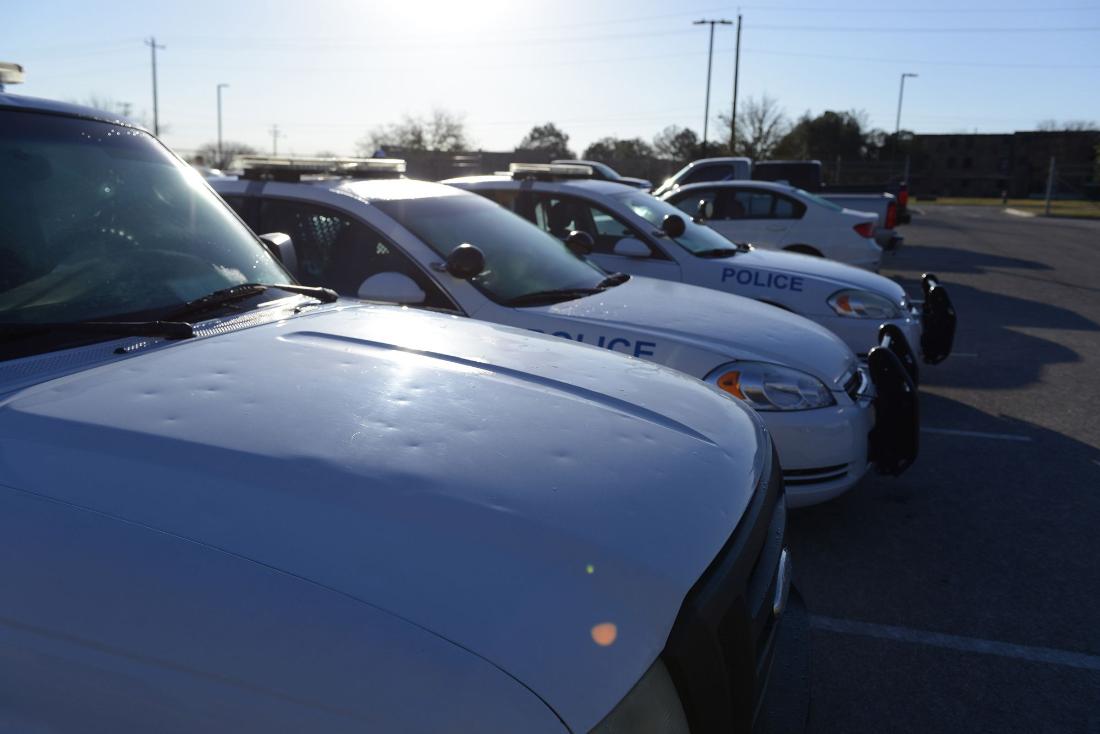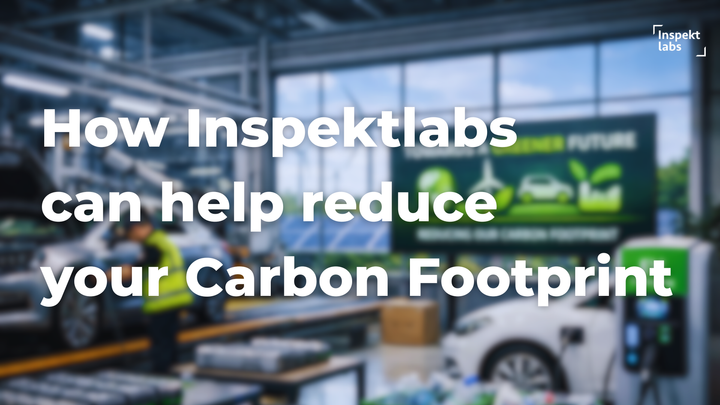Measuring the Size Of Damage in Car Damage Inspection | Inspektlabs
Accurate measurement of the size of damages is important for many automotive and insurance players for decision making. It can help insurers offer comprehensive premium plans and help rental and leasing businesses maintain fleet health.

In this post, we will discuss how to measure the size of damages on cars. We will start the discussion by establishing a fundamental understanding of what we mean by the size of the damage. Then we will discuss the relevance and importance of determining the size of damages. We will discuss how the size of damage can be determined and what the challenges are associated with the process. Lastly, we will analyze the relevance of hail damages through a case study before concluding.
Introduction
When it comes to the size of damage on cars, sedans suffer the worst of it. Compared to trucks and SUVs, sedans are lighter and are often more easily damaged during crashes. The degree of damage depends on many technical factors, including the angle of impact and speed. The size of the damage is a critical component during inspection for car insurance. When we deal with car damage, there is an apparent need to categorize and appropriately mark each damage. The number of damages, size, and extent significantly impact the steps a car owner needs to take. Let us discuss the relevance of the size of the damage and how a vehicle damage inspection system can help determine it.
What is the Size of the Damage?
The size of the damage is essentially the measure of the actual dimensions of the damage. The measurement of the damage's length, breadth, and depth help us determine the size of the damage. The first two components, viz. length and breadth, are applicable when damages such as scratches or cracks on the glass are concerned. The depth of damage has relevance only when we are measuring dents.

The Relevance and Importance of Determining the Size of Damages
Now that we have a fundamental understanding of the size of the damage let us discuss why this factor is relevant. The size of the damage can significantly impact the next set of actions after the car damage inspection. Car rental and car leasing businesses need to assess the size of damages when a car is returned to them so that they can charge a customer accordingly. For example, if a scratch is over one inch, the car may need repair. The customer may have to cover those charges. The size of the damage is also relevant because such businesses need to maintain their fleets and ensure that their vehicles are in working condition. If the damage is considerable, it may impact the aesthetics but also the safety of the car. Therefore, these businesses need to determine the size of damages accurately.
Many auto insurers also use the size of damage to determine whether a specific part should be repaired or replaced. Auto insurers also use the size of damages to determine the vehicle's precise condition. They set the insurance premiums based on the number of damages and also their severity. The size of damages also gives businesses an idea of the internal damages that the vehicle may have sustained. So, based on the size and location of the damage, predictions can be made regarding the potential internal damages that the car has sustained. For example, a reliable indicator of possible internal damages is the depth of dents. If the depth is high, there is a higher likelihood that the damage extends beyond the surface and may have caused some internal damage. Therefore, it is critical to measure the size of the damages.
How Can We Measure the Size of Damages?
Let us now discuss how we can measure the size of damages with photos and videos. There are two approaches for measuring the size of damages. The first is by looking at the relative size of the damage with respect to the surrounding parts. Inspektlabs' computer vision technology can detect which part is present in the photos and videos, and it can further detect the damages that the parts have sustained. For example, let us say we know that the car's front door has damage of a certain size in terms of length and breadth. So, by analyzing the front door's dimensions proportionately, it is possible to determine the approximate size of the damage relative to the size of the front door.

Let us consider an output generated by Inspektlabs' API. As we can see, it can accurately measure the width, height, and even the dent's depth based on the image.
],
"sizeOfDent": {
"Back Bumper": [
{
"imageId": "in497020210811094216-5.jpg",
"properties": {
"dentWidth": "11-14 cm",
"dentHeight": "14-17 cm",
"dentDepth": "11-14 mm"
}
}
]
},
Some damages are also measured not only by the relative size of the car part but also by the customer placing a certain object near the damage. So, for example, there are cases where the car's windshield cracks. In such a case, the customer can place a credit card or a coin next to the damage. The objects used for this approach are of a standard size, giving us an idea of the approximate damage size.
The second approach is through augmented reality and 3D modeling. It is possible to measure the length and breadth of an object using augmented reality. We can already observe the application of this technology in iPhones. The iPhone offers an in-built app that can measure the dimensions of nearby objects. Similar technology can help detect the dimensions and size of damages on cars.

What are the challenges in determining the size of damages?
There are a few difficulties that arise when determining the size of damages. First, there is an inherent limitation when we assess the damages through photos and videos. It is challenging to assess depth because depth is essentially 3D information. Currently, the depth of the damages is approximated based on the scope of the damage. In the near future, with the advancement of certain technologies, depth detection is bound to improve. LIDAR, for example, offers depth perception. Therefore, through using this technology, it may be possible to detect the depth of damages to a higher degree of accuracy using smartphones in the future.
Another challenge arises because of the way a customer has captured the pictures and videos of a car. In some instances, the customer takes close-up views of the damaged sections of the car. Due to this, the AI is unable to determine where the part is or is unable to demarcate the part's boundary. This factor makes it challenging to determine the size of the damage with respect to the size of the part because the customer's perspective is highly zoomed. If the AI is unable to determine which car part has sustained damage, it has no measurements to contrast the size of the damage. For example, consider the images below.


In the images above, the perspective is highly zoomed in. This zoomed-in perspective prevents us from accurately determining which car part is damaged and what is the car part's size. Both these details are indispensable components when determining the size of the damage. Therefore, AI cannot provide a definitive analysis in these instances.
Another challenge that persists is that many types of damages do not have a generic structure or shape. Let us consider scratch damage, for example. Scratch damage could comprise a line, a dot, or even a cluster of dots. In such cases, the primary challenge is to ascertain the length and the breadth because the shape of the damage is atypical. These atypical damages cause a lot of uncertainty since the measurement of such damages is subjective.
Case Study: Hail Damage
Let us consider a brief case study to cement our understanding of this concept further. Hail damage is a somewhat common type of damage that impacts cars. The damage caused by hail depends on the car's size and the hailstones' size. The size of the hail plays a significant role in the damage. Typically, hail smaller than one inch does not cause noticeable damage to vehicles. Larger hailstones will cause moderate to severe damage. The size of the hail depends on wind direction and other environmental factors.

The repair cost of hail damage will depend on how much metal is damaged and whether additional paintwork is needed to blend the car's color. Major dents on the body panels will require extensive repairs. The repairs will be much less expensive if a car has only minor hailstone dents. Large hail can also damage your car's mechanical system. Hail can also be big enough to knock out windshields and car sensors, driving up the cost of repairs. Therefore, detecting the size of the damage is crucial in this process. The rest of the repair process is contingent on accurately determining the size of the damages.
Conclusion
Accurate measurement of the size of damages is important for many automotive and insurance players for decision making. It can help insurers offer comprehensive premium plans and help rental and leasing businesses maintain fleet health. As more technological advancements integrate into the car inspection framework, the accuracy of determining the size of damages is bound to improve.



